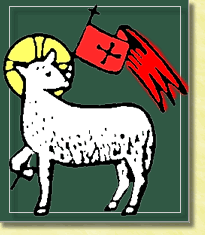A reader left some comments on an essay I’d written a few years ago entitled Anglican Reflections on Justification by Faith. Unfortunately, an adequate response required more space than would fit in a comment box. Here’s my response to the first comment:
Very good article. Some Reformers identified the doctrine of justification as the “article by which the church stands or falls” and Luther himself said something very similar. Yet, as you indicate, the Reformation understanding of justification as 1) forensic and 2) distinct from sanctification was a genuine doctrinal development. Alister McGrath agreed with this assessment saying that the Reformation understanding was a “theological novum.” Herein lies the problem: if the reformed view of justification is a theological novum and it is central to our understanding of salvation, then it would seem that the church had erred on a central doctrine for 1500 years; indeed, it would seem that the church only began to “stand” with this theological discovery. So, I’m curious as to why you would label the Reformers view of justification as Doctrinal Development 1 instead of Doctrinal Development 2 (designations that you used in an essay on DD). Thanks. Steve
 Steve,
Steve,
Three different issues need to be addressed here. First is the notion of doctrinal development itself. What constitutes a genuine as opposed to an illegitimate doctrinal development? Second concerns the question of whether justification by grace through faith is a genuine doctrinal development or rather an illegitimate development. Third, if justification is the article by which the church stands or falls, was it the case that the church “erred on a central doctrine for 1500 years”?
(1) So what constitutes a “doctrinal development”? A doctrinal development takes place when the church affirms as definitive a doctrinal position that had not been clearly articulated previously. In a very real sense, by definition, all doctrinal developments are “theological novi,” and it is for this reason that they often meet with opposition. Primary examples would be the councils of Nicea and Chalcedon. Nicea affirmed dogmatically that Jesus Christ is homoousios (of the same nature or “consubstantial”) with the Father. Chalcedon affirmed what became the official dogma concerning the incarnation – that Jesus Christ is one divine person with two natures, one divine and one human. Some resisted homoousios on the grounds that it was not a biblical expression, and that it was suspect as being “Sabellian.” Nestorians and monophysites/miaphysites rejected Chalcedon for opposite reasons. Nestorians rejected the language of “one person” because they suspected it was monophysite, while monophysites rejected Chalcedon because they suspected it of Nestorianism.
(more…)








